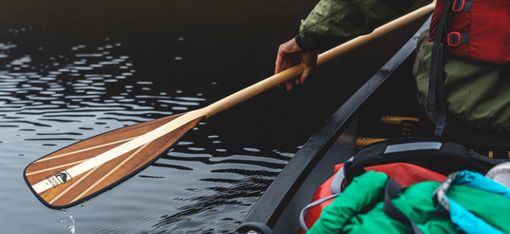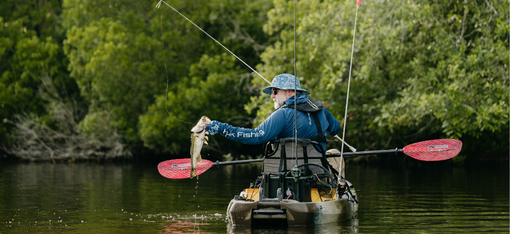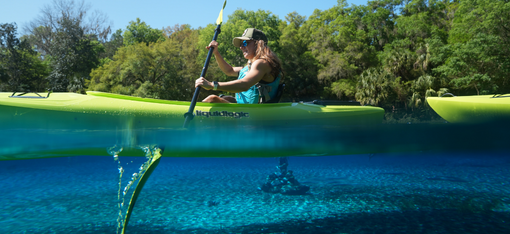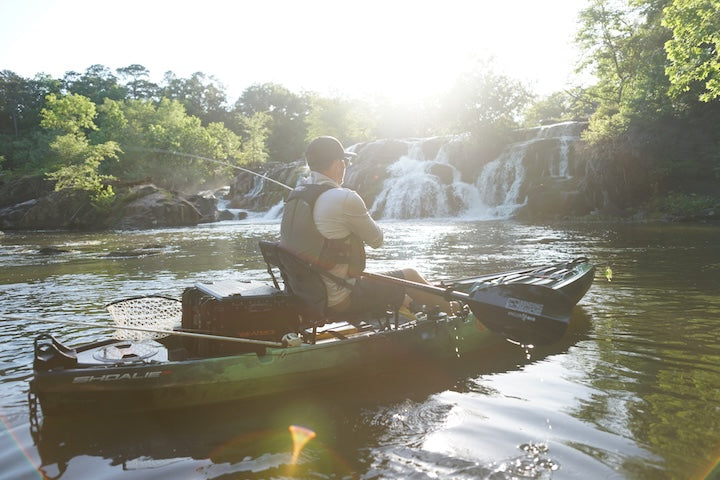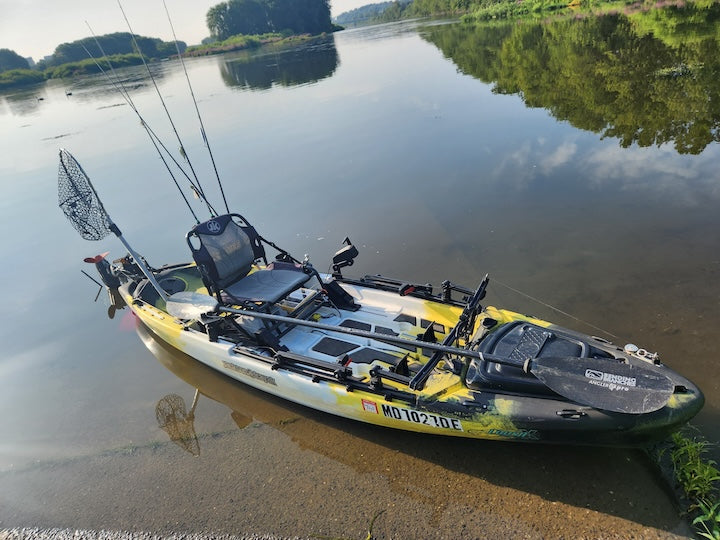Kayak Fishing & Photography Mixing: Interview with JD Desrosiers
8-minute read
Bending Branches ProStaff team member JD Desrosiers offered some of his time and expertise to tell us about his photography life and work. Our conversation with him will inspire anyone interested in combining kayak fishing (or any kind of paddling for that matter) and photography.
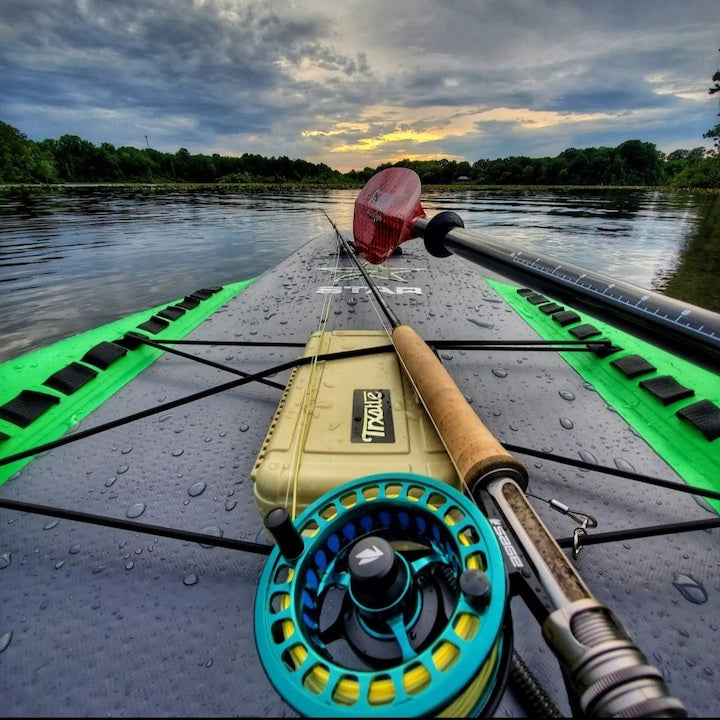
BENDING BRANCHES: Give us a little background about yourself and your kayak fishing life.
JD: I’ve been in the kayak fishing industry for approximately 10 years. Just on a whim, I reached out to a kayak company that’s headquartered here in Greenville [South Carolina] and that led to me being on their pro team. Then I moved on to another company and it was there I was introduced to Bending Branches paddles.
That relationship developed over a year’s time and eventually turned into being offered a spot on your National Pro Team. It’s been fun. I was able to be part of the development of the last couple of [kayak fishing] paddles that have come out. I have a lake in my backyard so I can provide feedback very quickly.
BRANCHES: When did you get into photography?
JD: I initially got started in high school. I took a photography class and really fell in love with it. Then when I went to college I minored in photography. That’s when I bought my first serious camera, a Pentax K1000. It was fun because back then it was film, so we had a dark room. We were able to shoot six, seven hours and then go develop our film. I was shooting constantly.
It just kind of segued from there. I got more into post-editing. When GoPro came out it just made sense to have them on the kayaks. I’ve had a bunch of different GoPros, and still carry one around in my pocket. It’s always with me on the kayak because it’s waterproof and bombproof. You can really beat the snot out of the thing!

Recently, I bought a Sony Alpha, as the size of the DSLRs was pushing me to mirrorless. I really love the Alpha and how versatile it is. I can shoot 4K video, it shoots 11 shots a second, I can manipulate the aperture and shutter speed, all that. On the water, I’m pretty careful with it because I don’t have a waterproof housing for it.
Right around that time, I got into the drone scene which is a lot of fun. When I’m out in my kayak I always take my GoPro, Sony and drone.
BRANCHES: What’s unique about drone photography?
JD: The most important thing is knowing the laws. You can get in some real trouble flying a craft. It’s regulated by the FAA, and you don’t want to cross the FAA! They don’t mess around.
[NOTE: One law many don’t know about is that it’s unlawful to fly drones in national parks across the US. More people are being cited for this as drones get more popular.]
One of the most common violations I see is when people go up over the 400-foot mark. You’re not supposed to fly over 400 feet unless you have to go over a 400+ foot object. But when you’re that high, you’re seeing the sunset and that’s about it. You’re not seeing the details of a kayaker on the water.
When I started doing photography with my drone, I had to learn that perspective—where can I get a cool shot but keep the details of the paddle, the kayak and the angler? I would say the sweet spot is from two feet off the water to about 50 feet. If you want a bird’s-eye view, you’ll bump that to maybe 75 feet. That way you can still see the paddle.

Drone photography has been a lot of fun to learn. It gets a super cool perspective. They’re easy to fly once you get used to it, and I’m pretty careful with it around the water. I mostly fly fish so I can get really cool shots throwing lots of long line, with my loop in front of or behind me.
I have a DGI drone that’s the size of my cell phone so it’s small and compact. It’s got a nice camera with a gimbal. Then I run Polar Pro filters on my drone and my cameras that help cut down the lighting and keep the details nice and crisp.
BRANCHES: How do you photograph yourself using your drone?
JD: When I’m photographing someone else it’s very easy because I can stay on land or be in the boat. I can launch my drone out of my hand and catch it in my hand. Once I have a home spot recognized it’ll always come back if I use that button. Because of that, I can get more creative when I photograph someone else.
I hardly ever get shots of myself, but I like doing that too because I’m always behind the camera. When shooting myself it’s usually from a straight-on perspective or straight down because I can hide the controller. A big, bulky controller ruins a shot. 90% of the time it’s tucked behind my back for these.
BRANCHES: When is your camera better than your drone?
JD: Detail shots. With my camera, I’m shooting at 25 megapixels. I really love shooting just inches off the water. I think that’s such a cool perspective, especially if I’m in vegetation like lily pads. I put my camera right there in the lily pads and I might have a nice sunset in the background. You can angle the paddle to where the sun’s coming through the paddle.

BRANCHES: How do you combine your kayak fishing with your photography?
JD: As I said, I have a camera with me everywhere I go. Even phones are so powerful nowadays. My current phone has a 50-megapixel camera on it. But I don’t rely on it because you can tell when something is a cell phone image.
I really love having that Sony just because it’s so versatile, with the couple of lenses I have for it. The GoPro also allows me to take my photography anywhere because it’s waterproof. I can mount it facing me or pick it up and handhold it—get close to my buddies when they’re pulling a fish out of the water.
I’ve always had some type of camera out when I’ve been fishing, so it’s just kind of natural.
But I do a lot of river fishing, so that’s where I had to really figure out what cameras to bring when—because I have a chance of flipping. A lot of the rivers here in the Southeast are very rocky. All the ones I fish have rapids. So I have to have a waterproof case, a waterproof bag and have it tethered in case I flip—and it’s happened.
I got caught off-guard in Savannah, Georgia. There’s an area down there called the Savannah Rapids. It’s very well known. There’s a Class 2, 2+ rapid at the end. I was in a brand-new boat and thought I’d have some fun. I love playing in the whitewater and I was reverse surfing a wave. I got out of the wave and the water was boiling up from the bottom and I didn’t pay attention to it. The next thing I knew I was swimming! But I didn’t lose my camera gear.
When I got back in the boat a fellow Branches team member yelled that he needed me. He had a huge smallmouth. So I took the picture for him even though I had just flipped. He never even saw me go over.
BRANCHES: What else do you need to keep in mind photographing from a kayak vs solid ground?
JD: Movement. You’re always in a boat on the water and it’s always moving. I don’t shoot very tight images. I would rather take care of cropping an image and post-edit it.
So shoot large and shoot multiple images. Don’t just rely on one image but take 3, 4, 5, 10 images. I’ll shoot 300-400 images, looking for 10 good ones. That’s how it works.

Shoot loose and stay loose yourself. I’ll very quickly get out of my kayak, too. If I’m photographing someone else, I’ll jump out, tread water, walk, wait—whatever I need for that really good shot I’m looking for. I’ll walk off the bank in a heartbeat! I’ve got waders that I’ll wear so I can go chest-deep without getting wet in the colder months. It just lets you be more creative.
I’ll get people to throw lures at me to get the splash of the lure right in front of me. I’ll let people paddle right on top of me to get that paddle working.
BRANCHES: What do you suggest for kayak anglers who may be new to photography but want to get into it?
JD: I would say start off simple. Just start with one camera. Figure out your niche. Figure out what you like. It’s like when you start kayaking, when you fall in love with it you want everything under the moon. The same goes for fishing. You want this and you want that. But start simple.
Either go buy a GoPro, even a used one for a couple hundred bucks. That camera can do it all. It can record video, do slow-mo, and it can take amazing images. Or get a small point-and-shoot that’ waterproof. Nikon and Canon both make pretty decent ones that are bright colored so if you drop it in the water it’s relatively easy to find!
Once you’ve figured out your niche you can decide if you want to invest some serious money into equipment or just play with the GoPro. And editing is a whole other animal. Don’t worry about that yet.

A big thanks to JD for his time and thoughts! You can follow him on Instagram and Facebook to see more of his gorgeous photos.
All photos courtesy of JD Desrosiers.
Do you have paddle questions our friendly Customer Service Team can help you with today? Contact them: 715-755-3405 • [email protected]
More for you...




